All the girls dream of a clean, flawless face skin, but not every representative of the beautiful half of humanity can boast of this natural perfection. Various cosmetic procedures help to restore the skin, but this takes time and money, sometimes, considerable. And here the proof-reader for the person will help to hide defects of a skin, to give to it a radiance and a healthy appearance for few minutes!
Varieties of tonal tools
So, you decided to purchase a proofreader. In order not to make a mistake with a choice, you need to know some nuances, otherwise the acquisition will be useless. Often, for a perfect face correction, you need several tools, each of which will perform a certain function.
There are several types of proofreaders having different forms of output. These can be pencils, tubes, pallets, applicators. Based on the form of the tonal facility, you can determine its texture. So, applicators have a liquid consistency, and pencils - a solid.
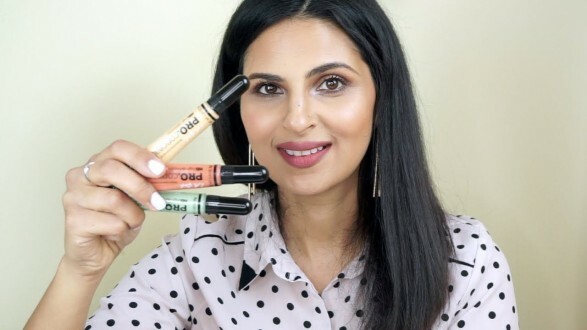
Daily make-up requires corrective cosmetics with a water and oil base. But dry and dense stickers stylists do not recommend to use every day to avoid clogging pores. You can use them only in exceptional cases, when you need to look perfect 100%.If you need to get rid of a small defect, such as a pimple, redness or scratch, the sticker is ideal.
Let's consider in more detail types of tonal means:
- Dry corrector. It is a solid pencil. Has a light consistency, due to which it is evenly and evenly distributed over the skin. It has increased resistance and can last on the face all day, that is, it completely copes with its corrective function. It is used zoned. A distinctive feature of dry correctors is the content of antibacterial active ingredients. They suppress the focus of inflammation and prevent it from spreading further.
- Oil-based toner. Correction products are contained in pallets, tubes and jars and have a fairly dense consistency. The cream smooths the tone of the face, hides imperfections of the skin( blue under the eyes, pigment spots, pimples).
- Liquid water-based corrector. Contained in bottles with a dispenser, as well as in the form of automatic pencils. The visually liquid corrector is similar to a tonal with a light texture. This tool is not applied to the entire face, but to areas that require masking. The skin is distributed with a special brush.
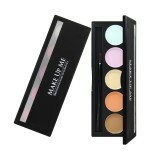
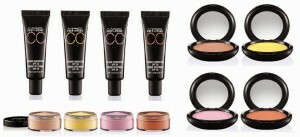
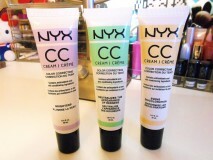
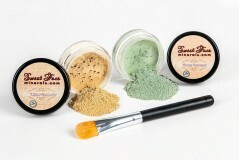
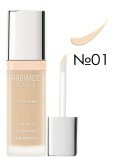
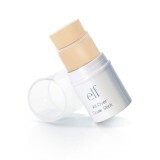
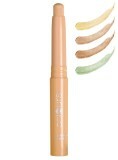
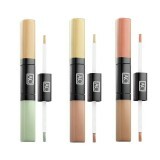
Corrector or concealer?
Conditionally, the correction tools are divided into two groups:
- The corrector( correct) refers to the first, in English it means "correct".It masks skin defects with various shades of color palette, each of which performs a certain function. Apply corrector should be previously acquainted with the color scheme and choosing the optimal solution for yourself.
- The second group includes concealer, which means "hide".Due to the opaque thick consistency of the product, the shade of which is at the maximum close to the natural tone of the face, the concealer reliably conceals defects on the skin.
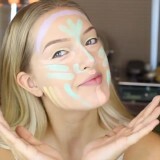
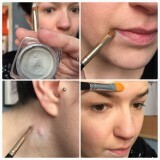
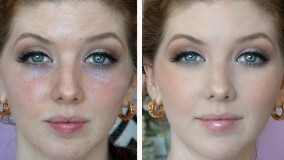
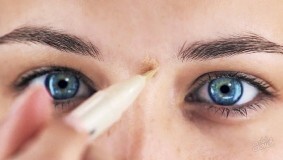
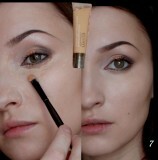
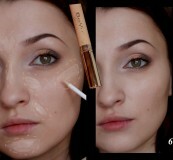
Produced in the following forms:
- A pencil designed to hide acne and their effects. Applied locally.
- Stick, which is a tonal tool in the form of lipstick. Also used pointwise.
- Liquid foundation, which is applied to the skin with a brush or applicator. Due to its high concentration, a liquid concealer with an equalizing effect is able to hide any skin imperfections. Cream-based concealer. A dense cream can be applied both with fingers, and with a brush or an applicator. Tonal cream is the most reliable concealer, which can hide even facial wrinkles.
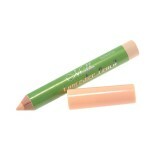
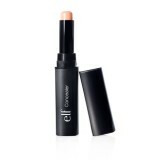
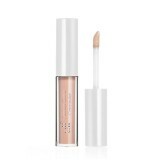
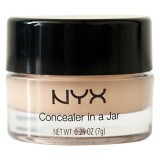
The tonal cream is the most popular remedy due to its versatility. It is suitable for all skin types. To make the face look as natural as possible, choosing a concealer follows the tone of the skin lighter.
Color palette of correctors for the face
Proofreaders have an extensive color range, each shade is designed to solve a specific problem.
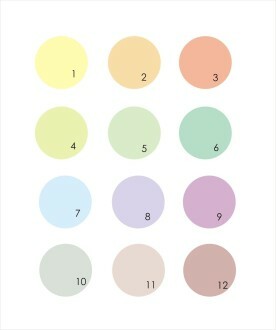
The basic color palette of proof-readers
The color palette of proof-readers is available in two forms - cream and dry. Choose the one that is closer to the available tonal basis.
Shades of color:
- lilac;
- blue;
- orange;
- peach;
- yellow;
- pink;
- bronze;
- white;
- is green.
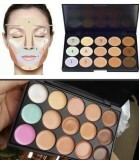
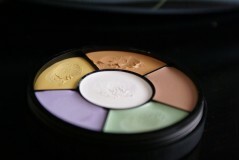
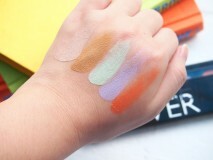
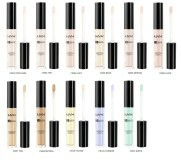
What color is intended for, let's understand:
- Blue perfectly masks the divorce from the unsuccessfully imposed tanning and blue under the eyes.
- Peach eliminates unhealthy pallor.
- Bronze hides freckles and pigmented spots.
- White highlights the required areas.
- Lilac removes bruises under the eyes and other signs of fatigue. Also with the help of lilac it is possible to disguise reddening on very white skin.
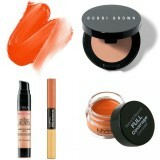
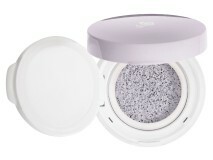
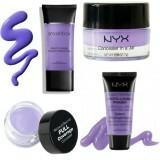

- Yellow helps to mask couperose, vascular spots, small scars, scratches, bruises and bruises of small size. Neutralizes the dull complexion, gives the skin naturalness. Using a yellow pencil of dense consistency, it is even possible to hide tattoos and varicose veins. Often stylists use it and as a basis under the eye shadow.
- Pink refreshes unhealthy dull skin, smooths tone, rejuvenates. Pink concealer is the ideal solution for women with a fatty skin type.
- Blue masks pigmentation, blue under the eyes, hides moles. With this shade, you can neutralize brown, orange and yellow.
- Orange, in turn, neutralizes blue, so it is used to mask the bruises under the eyes.
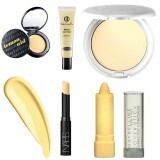
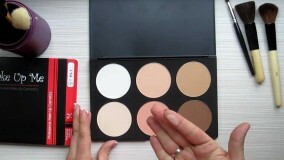
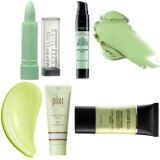
Green Corrector
It is worth to tell about it separately. A green corrector is the ideal solution for women and young girls with a derma prone to irritation, because with it you can not only disguise acne, but also treat. The composition of the remedy includes extracts of tea tree and salicylic acid, which localize foci of irritation and relieve itching.
How to use the green color corrector:
- Apply to a clean face a moisturizer with a light, low-fat texture. Remove excess with a napkin, otherwise the skin will shine.
- Apply make-up base.
- Disguise problem areas with green pencil. However, you do not need this sticker, but a special brush that will distribute the corrector gently and evenly.
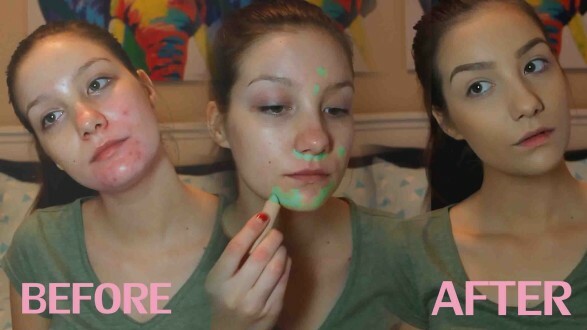
- Mask pointwise, trying not to touch the healthy areas of the skin, otherwise the infection will spread very quickly.
- After applying the corrector on the face, apply a little powder. At the same time, it is compact, but it is by no means friable, since spots may appear on the skin.
- To mask the facial wrinkles around the eyes, the corrector should be used together with the eye cream, so as not to stretch the skin.
- The green pencil is not used to mask the bruises under the eyes. Green can not neutralize blue.
- To create the effect of elastic skin, the tonal remedy is applied with a special brush, light movements from the chin to the forehead.
- To obtain the effect of porcelain leather, you need to use a tonal means of silvery hue.

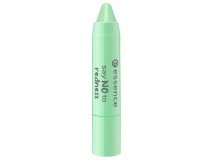
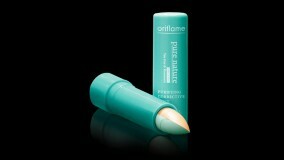
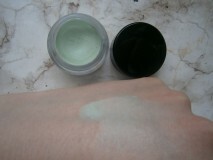
When using the corrector, it is necessary to follow the golden rule: better is less, yes it is better. If you overdo it with a tonal tool, the face will have a so-called mask effect, and it does not look very aesthetic.
How to choose the corrector
In accordance with the problem, the corrector color is selected. Among all the available tools is worth noting the corrector Max Factor Color Corrector CC Stick. It is represented by five pencils of different shades: green, purple, yellow, pink and highlighter. Each of them is designed to solve a specific problem.
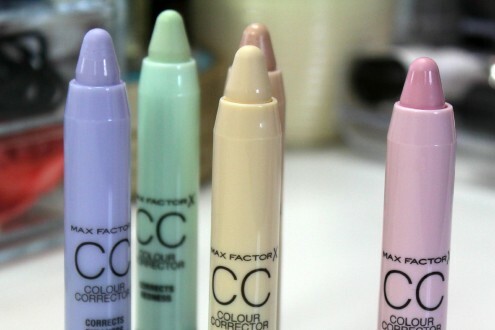
Proofreaders Max Factor CC Stick
Tips for stylists:
- White women need a pink tone.
- For the owner of a swarthy skin tonal means of a peach shade will approach.
- Unaesthetic circles under the eyes, bruises, swelling are removed with a pencil, the shade of which is lighter than the natural skin tone. However, too light shades are even more emphasized by the blue.
- Green pencil with a dense texture will save from inflammation and irritation.
- The smaller the area on the skin that requires correction, the greater the density of the agent.
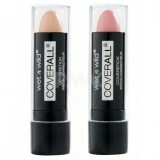
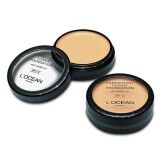
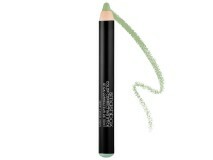
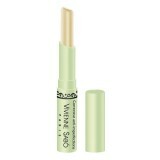
- Oily, problematic skin is contraindicated with a foundation that has an oily basis. This is fraught with clogging the pores, the appearance of acne and an increase in the fat content of the skin. It should be used primer( foundation for make-up) of a light consistency, which will allow the skin to breathe. If necessary, a stick is used.
- Sensitive dry skin is suitable foundation cream on a fat basis, which moisturizes the dermis, will give the face freshness and elasticity.
- To mask small mimic wrinkles, you need a liquid corrector of a light shade with reflective particles. However, the texture of the remedy should not be too heavy and dense, otherwise the cream will only emphasize wrinkles.
- Do not test the tonal tool on your wrist. The hue will not be selected correctly.
- Lighten the blue circles under the eyes will help corrector, in which the supply of tonal means is carried out automatically.
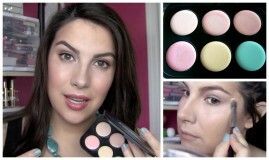
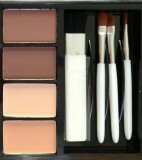
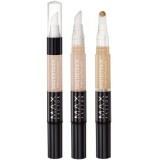
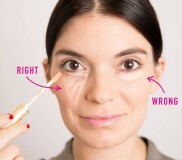
Many factors affect the skin condition, in particular, negative environmental factors, unbalanced diet and poor sleep. The use of correctors in makeup will help achieve excellent results and make the skin radiant and well-groomed.
Related Videos:
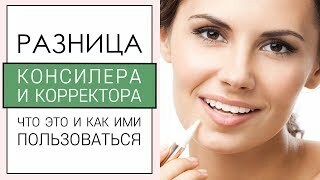 5:51
5:51 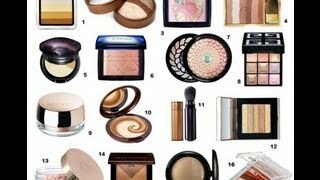 7:35
7:35 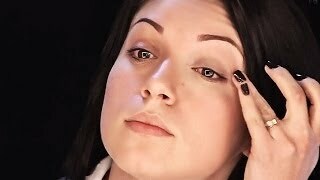 10:30
10:30 